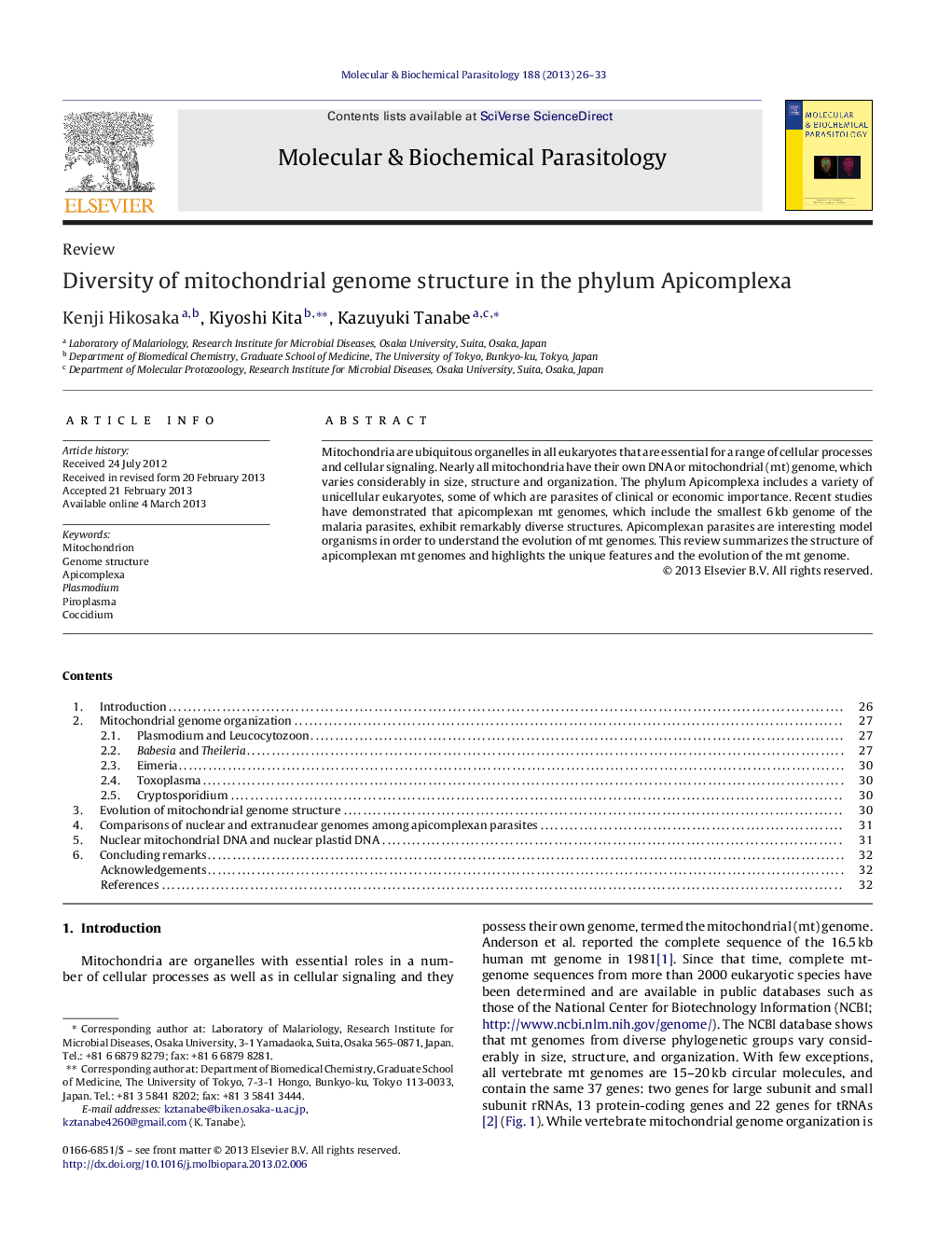| Article ID | Journal | Published Year | Pages | File Type |
|---|---|---|---|---|
| 2829812 | Molecular and Biochemical Parasitology | 2013 | 8 Pages |
Mitochondria are ubiquitous organelles in all eukaryotes that are essential for a range of cellular processes and cellular signaling. Nearly all mitochondria have their own DNA or mitochondrial (mt) genome, which varies considerably in size, structure and organization. The phylum Apicomplexa includes a variety of unicellular eukaryotes, some of which are parasites of clinical or economic importance. Recent studies have demonstrated that apicomplexan mt genomes, which include the smallest 6 kb genome of the malaria parasites, exhibit remarkably diverse structures. Apicomplexan parasites are interesting model organisms in order to understand the evolution of mt genomes. This review summarizes the structure of apicomplexan mt genomes and highlights the unique features and the evolution of the mt genome.
Graphical abstractFigure optionsDownload full-size imageDownload high-quality image (153 K)Download as PowerPoint slideHighlights► Mitochondrial genome organization is very diverse within the phylum Apicomplexa. ► Mitochondrial genome structure of Plasmodium and Eimeria is concatemeric and highly conserved. ► Mitochondrial genome structure of Babesia and Theileria is linear monomeric and highly divergent. ► Apicomplexans are interesting model organisms to understand mitochondrial genome evolution.
